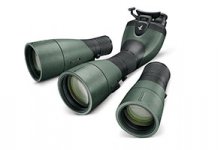JabaliHunter
Well-known member
Seeing Swarovski launch their latest BTX eyepiece module for their telescopes made me wonder why binoculars are made with two objective lenses? A single objective lens could be larger, yet combined with two eyepieces or ease of viewing. Might this be a way of addressing some of the weaknesses in optical performance, which as has been pointed out before, mostly fail to match the optical performance of some of the best low power telescopes?
Just curious...
Just curious...





